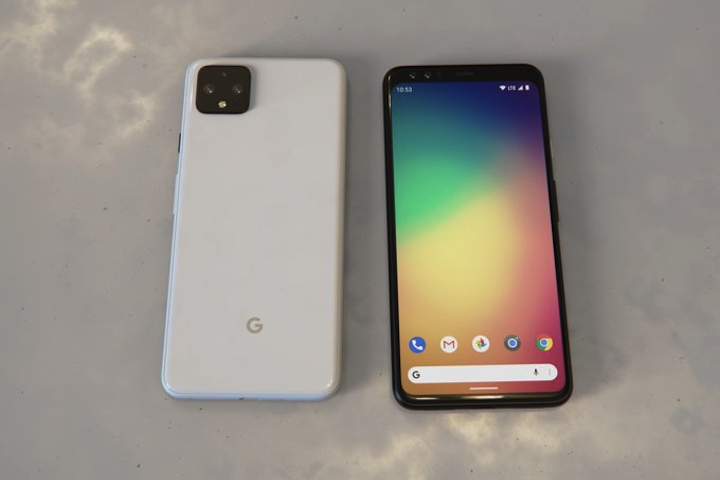When did bezels become the greatest crime in smartphone design? The public’s mostly irrational hatred of the bezel reached new highs over the past weeks, when leaks showed what Google may have planned for the Pixel 4.
It would have caused less outcry if the body were made of baby seal. Then at least the complaints would be valid. As it stands, they aren’t, and the comments are likely driven by the industry’s desperation to promote and sell “different” looking phones — when the tech to make that possible doesn’t really exist yet.
Manufacturers declared war against bezels, rather than phone owners, and they did so only to make us upgrade. The trouble is, now we’re so used to seeing minimal bezels on phones that we’re blinded into thinking bezel are ugly and old, when in fact, if they’re handled properly they can still look great, and that includes the Pixel 4. Don’t believe me? I’ll prove it.
When bezel-less isn’t bezel-less

You cannot buy a truly bezel-less smartphone yet, but that won’t stop companies telling us they’re here. In an effort to banish the wickedness of a frame around the screen, many phone makers have come up with ever-more ludicrous ways to avoid them, mostly revolving around attempts to solve the problem of where to put the front-facing camera when the screen gets in the way.
Because technology doesn’t allow them to do this properly yet, there is always, always, a bezel somewhere, either at the top, the bottom, along the sides, or at all four spots. Yet these devices have been erroneously described as bezel-less since they first appeared. And yes, I’m almost certainly guilty of saying this (don’t go looking, I’m admitting it) on more than one occasion. Lazy shorthand aside, we have a host of almost bezel-less phones being pushed towards us every day, and they’re very tempting.
Buying into the hype around them is fine because they look awesome. The Oppo Find X is visually superior to many supermodels, and the Galaxy S10 Plus has some of the slimmest side bezels out there, just like the OnePlus 7 Pro. The way manufacturers have dealt with the selfie camera is also exciting: Notches, hole-punches, pop-up cameras, motorized cameras, and even shark-fin cameras make extending the screen to the top of the phone possible. Others, like Huawei on the P30 Pro, have introduced cool speaker technology that hides under the screen, so it can remove the speaker and shrink the bezel even more.
Admiring and desiring the current almost-bezel-less phones is natural. They look futuristic, they provide immersive viewing experiences, and — here’s a crucial point — the marketing departments are telling us how amazing they are, and exactly what our sad lives need. No problem. It’s how new products we don’t really need are sold, and we allow ourselves to be sucked in, because we damn well want that great-looking new device.
The problem comes when backlash against the innocent bezel began.
Bad bezel

The Pixel 4 leaks have stirred up a hornet’s nest, except rather than angry insects, hundreds of smartphone nerds swarmed together to drone on incessantly about how the design — which has a bezel around the screen — is already outdated, a failure, and that Google is out of touch. All because it has a bezel. It’s not like it has an alphanumeric keypad.
The collective whinge is similar to the outcry regarding the screen notch on last year’s Pixel 3 XL, with one key difference: The moans about the Pixel 3 XL were entirely justified because the notch was hideous, and the stereo front-facing speakers did a great job on emphasizing the standard Pixel 3’s bezel’s size. The Pixel 4 is not hideous, has lost the misjudged speakers, and slimmed the chin right down to make the look perfectly acceptable. It’s a big improvement.
I’m not saying it’s the most stunning design I’ve ever seen, as it’s obviously not; but it’s not an outdated or ugly design either. The bezel-is-old concept is driven by marketers. It’s actually the most sensible design choice when coping with fitting a big screen into a small body when we consider how complex it is to introduce pop-up cameras, double punch-hole screens, and in-screen speakers.
The bezel is there because it works. Think of it like the physical switches to turn on the lights in a car. You can replace them with buttons on a touchscreen, which also work, and help clean up the dashboard, but the humble switch is reliable, simple, and everyone can use it. It still has its place, just like the bezel on your smartphone. When dealt with correctly — by which we mean not being visually overwhelming like the Pixel 3 XL’s — and when not observed through eyes bewitched by marketing spells, they can even look good.
What? A good bezel?
- 1. LG G6
- 2. Porsche Design Mate 10
- 3. Porsche Design Mate RS
- 4. Nokia 8 Scirocco
Yes, they can look good. It wasn’t so long ago that phones with bezels were seducing the world. The LG G6 looked great when it was announced in 2017 and when you look at it again today, the trendsetting design is still strong. Beyond the slimmed-down bezels, the 18:9 aspect ratio screen went on to become widely used on other phones, for example. The Pixel 4 shares one of the key screen design aspects with the G6, which is essential to making the bezel look decent — curved corners.
Squared off corners really do make a phone look old, but four curvy corners on a large screen neatly sidesteps that problem, and keeps the phone looking fresh even with bezels. It’s not the only way to make bezeled phones look good either. The Samsung Galaxy Note 9, which is now almost a year old, has a large (by modern standards) bezel above and below the screen. Based on the leaks for the Galaxy Note 10, I’m not convinced the central punch hole is an improvement either. The Nokia 8 Sirocco, along with the Porsche Design Huawei Mate 10 and the Mate RS, and also beauties.
All these phones handle the side bezel in a classic way we’ve enjoyed since the Samsung Galaxy S8, by curving it over the edge of the body. To my eye, these all look great. Classy, stylish, and in no way out-of-date — and they all have top and bottom bezels. The Pixel 4, provided it does look the way we’re shown in the most recent leaks, is another in a line of winning designs that incorporate bezels in a sensible, well thought-out way.
Google has never prioritized a flashy design over the software and camera experience on Pixel phones, and it doesn’t seem to be changing this approach for 2019. It’s understandable if you prefer the look of another phone, but don’t dismiss Google’s efforts because of a fallacious opinion that bezels automatically make a phone look archaic.
Without sounding like a conspiracy theorist, that’s what “they” want you to think.
Editors' Recommendations
- A new Google Pixel Tablet is coming, but it’s not what you think
- This Google Pixel 8a leak just spoiled everything about the phone
- We have some bad news about the Google Pixel 9
- The Google Pixel Fold 2 just leaked. Here’s everything that’s new
- I did a Galaxy S24 Ultra vs. Pixel 8 Pro camera test. It’s not even close





